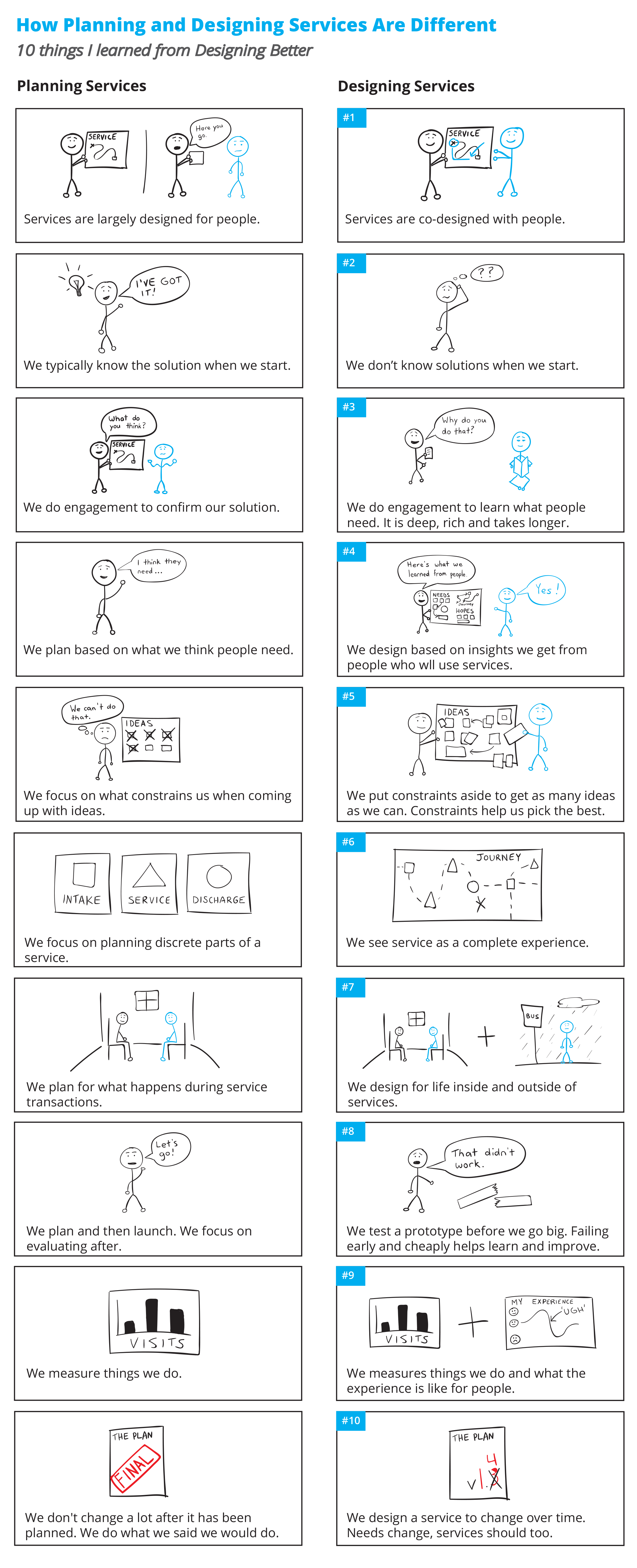What I've Learned About Designing Services and Why It Matters
Brooke Young is a System Coordinator based at CMHA WWD. Brooke’s been working with us for the past year on a big project to redesign adult mental health and addictions services in the region. As someone who has wholeheartedly embraced human centred design and design thinking in her work, she shares 10 compelling insights below about how we can use design to get to better.
Did you know there is a whole industry called Service Design? Neither did I! There are people who know how to design services and experiences really well.
HOW COME WE DON’T ENGAGE THEM IN HEALTH CARE MORE?
My guess – because we prefer to work with people who know what we do or are like us. I get that. Health care is different from building an ipad or what a Disney vacation feels like. We do different things. Our context is different: If we make mistakes people can die. That’s something that I think about and that scares me every time I step into a planning role.
THE FUNNY THING IS THOUGH, PEOPLE ARE PEOPLE.
Designing for people involves using the same human centered process, skills and tools. It blends subject matter expertise with wisdom and insights from unusual areas. If you know how to design solutions for people, you can design for them in any area: travel, employment, developing countries, and yes, health care or more specifically addictions and mental health care. I’m learning to let go of my fear and just try some things. After all, the recovery we ask people using services to engage in requires courage and a careful level of risk taking. If they can do it, so can I.
WHY DOES ALL THIS MATTER?
I’ve learned that we typically plan services for people, but we don’t often design them. By not designing for people we miss a huge opportunity to learn new things and new ways to better meet the needs of people who use our services. We miss the chance to build solutions with them that they will actually use. That’s why service design matters.
HOW IS PLANNING SERVICES DIFFERENT FROM DESIGNING SERVICES?
I’ve had the privilege of planning a number of services over the course of my career. As a trained clinical social worker, I always thought I was building solutions people needed and that put people at the centre. You know, person-centered care. I’ve come to realize that while I had the best of intentions, I missed the mark:
I didn’t deliberately pay attention to the actual needs of people. I would engage with them for about an hour at a focus group and think I knew what they needed. Then I’d go off with some other professionals and we’d plan it.
I didn’t focus on what an experience of a service would look like – how it would feel, what people would see, do, and think during the whole thing. I never asked the question “What do people need to feel when…”.
I didn’t even realize that we need to design for time when people are not in services! People have a whole life outside of service that I didn’t deliberately ask about or pay attention to when planning.
Most of all, I didn’t harness the wisdom and experience of people using services to help design them. I thought it was too hard, too complicated, or that maybe they couldn’t do it. Boy was I wrong! In fact, I now believe they hold the wisdom we need to design services that they need.
After slapping my hand to my forehead a number of times at all the things I missed, I’m learning to embrace my past faults and focus on trying to do something different. That’s what our whole system is trying to do with the Designing Better project. While it isn’t always as neat and clean as I would like, it has taught me a lot!
I’m still on my design journey. I learn something new every day. I don’t get it right all the time and that’s ok. Things don’t always line up as neatly as I would like, but I’m trying. I’m learning to trust the process, involve people who know different things, and to really listen to people using services. I know if I keep doing those things, we will get to better services and solutions for people. That’s what matters most to me.
Interested in finding out more about the Designing Better project? Visit the website at http://designingbetter.ca/


